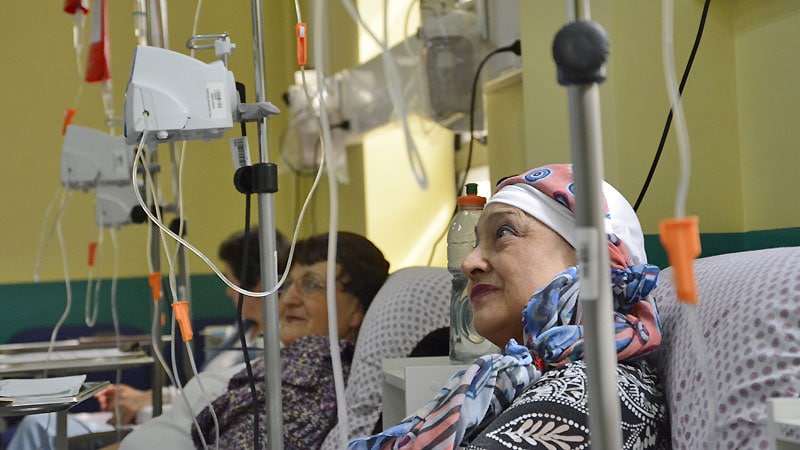Cancer infusion centers report that they are facing operational challenges. Two of their most pressing problems are a need for additional space to accommodate an increase in patient volume, and a critical shortage of qualified nursing staff, according to a survey conducted in mid-2022 by the California-based LeanTaaS, Inc, and the Association of Community Cancer Centers.
Almost 100 leaders from cancer centers across the country responded to the survey. Most were employed by community health centers, academic health centers, and private oncology practices. They managed an average of 10–30 infusion chairs in their centers.
The survey details how they are struggling to meet demands and how they were affected by 2 years of the COVID-19 pandemic.
“We’re at a critical inflection point where health system operators and cancer center administrators are grappling with how to expand the physical footprint of their facilities or find ways to optimize their space and processes to meet the growing need,” said Ashley Joseph, vice-president of client services, Infusion Centers at LeanTaaS, in a statement.
“The reality is, hospitals and health systems are in the most financially difficult year since the start of the pandemic, and the only sustainable and reasonably quick way to meet increased demand ― while still providing safe, high-quality patient care ― is to unlock capacity in existing facilities through a combination of technology and smart operational choices,” he said.
The survey also showed how artificial intelligence and machine learning–based technology with predictive analytics, which LeanTaaS provides, can help the centers remain “operationally agile,” as well as improve capacity and patient and nurse satisfaction.
The results of the survey are detailed in The State of Cancer Centers 2022.
The report identifies three top areas of focus for infusion centers in 2022: resource constraints (limited infusion chairs, nurse shortages, and pharmacies that are not able to keep up with drug demand); staffing shortages and burnout; and difficulty accessing data from the electronic health records (EHRs).
For resource constraints, more than 40% of centers reported that they need capital investment to build capacity in order to accommodate additional patient growth. Another 13% reported that they did not have the resources they needed to add space or infusion chairs to help with volume growth. The safety measures implemented during the pandemic led to a backlog of patients, which many of the centers are still getting through. More than half also said that they need major investment in order to meet the current demand for appointments.
The pandemic exacerbated the nursing shortage, and respondents reported using various approaches to staff their centers. Some are using travel or temporary nurses (23.7%), modified shifts (23.7%), and are increasing nurse-to-patient ratios (22%). Additionally, centers report using various tactics to address burnout, including staff recognition events (~45%), support programs for nurses (~32%), and increasing pay and benefits (~32%).
For the third key area, respondents reported that while EHRs can help inform decision-making, they are not meant to optimize asset utilization or improve patient access. EHRs do not use probability theory or simulation algorithms to account for delays, overbooking, cancellations, and add-ons, and the dashboards and reports that they are designed for cannot completely address these variables to the same degree as analytics software. Fully half of respondents reported that they found it somewhat or extremely difficult to access the data they need from their EHR. Nearly half (49%) also stated that they are recording operational performance manually in spreadsheets, which are inefficient, a drain of resources, and are prone to human error.
Solutions
Improving infusion scheduling and making it more efficient can help mediate some of the problems that centers are experiencing. However, meeting the needs of everyone involved, given operational constraints, varying nurse schedules, and very sick patients, remains challenging.
The survey authors note that artificial intelligence/machine learning technology can improve efficiency, and they give as an example the iQueue for Infusion Centers developed by LeanTaaS. This cloud-based solution can optimize infusion center scheduling templates. It is currently being used by over 500 infusion centers across the United States. It has helped to increase access, decrease patient wait time, and lower healthcare delivery costs, the company reports.
Roxanne Nelson is a registered nurse and an award-winning medical writer who has written for many major news outlets and is a regular contributor to Medscape.
For more news, follow Medscape on Facebook, Twitter, Instagram, and YouTube.
Source: Read Full Article
